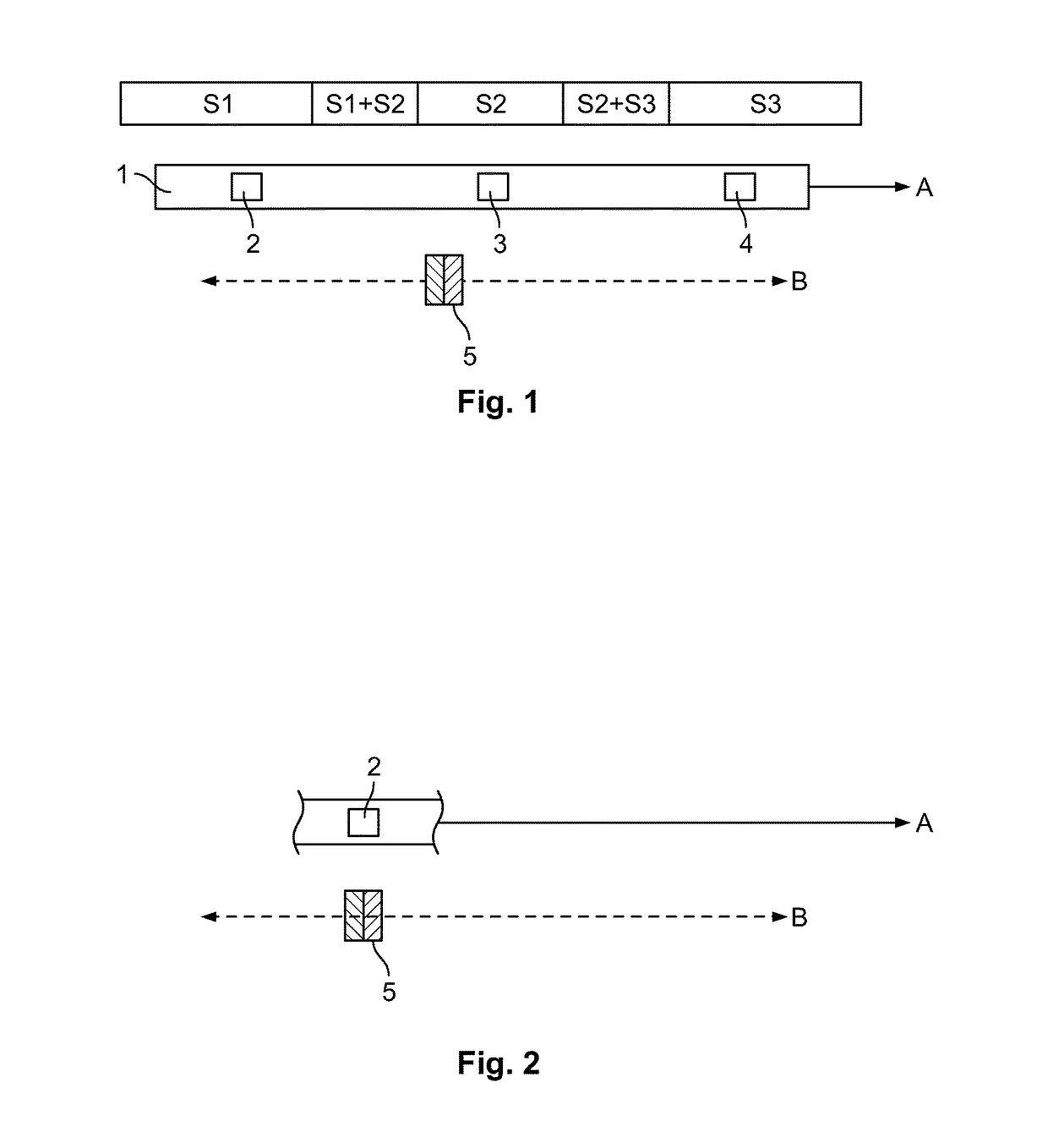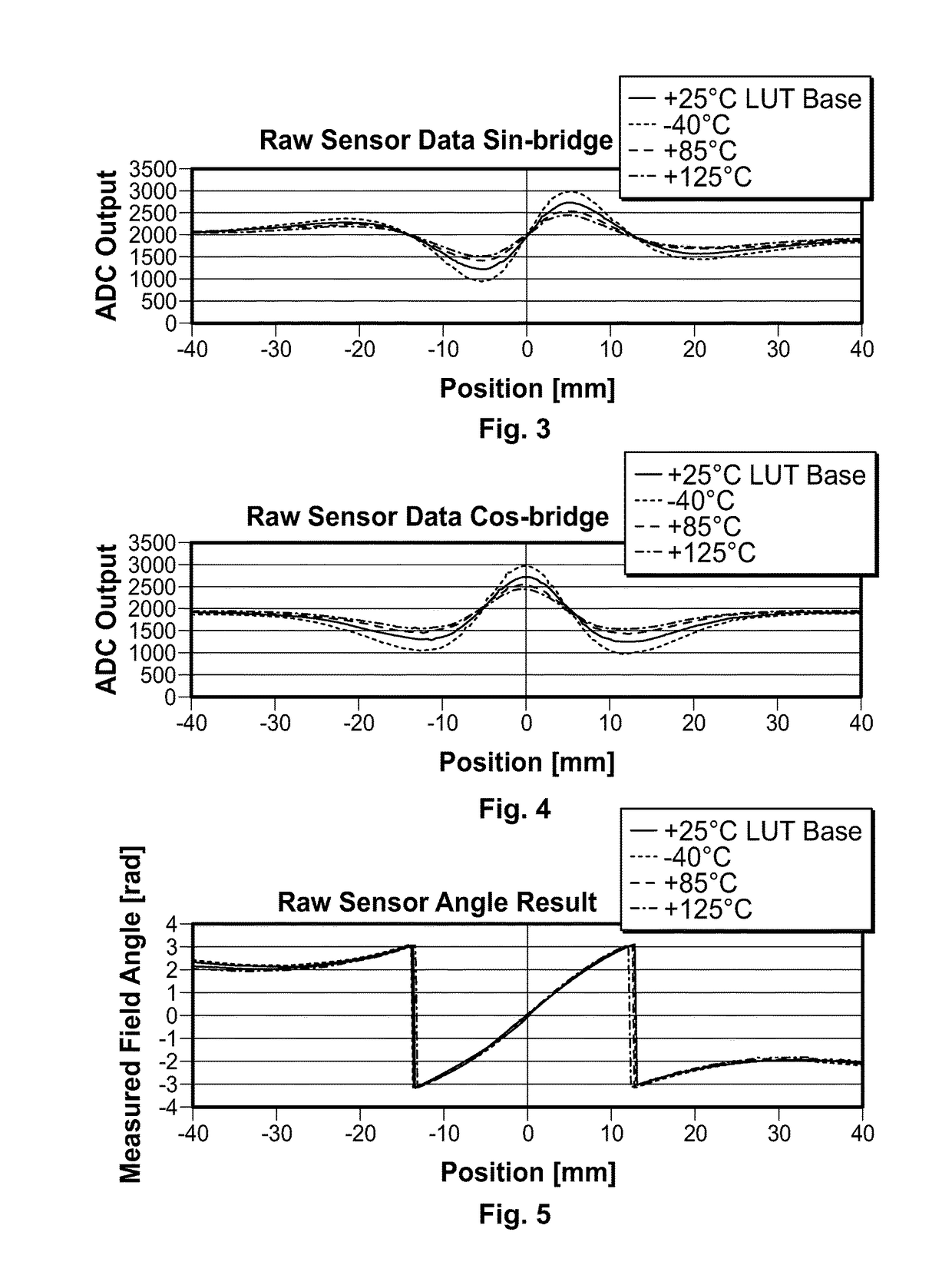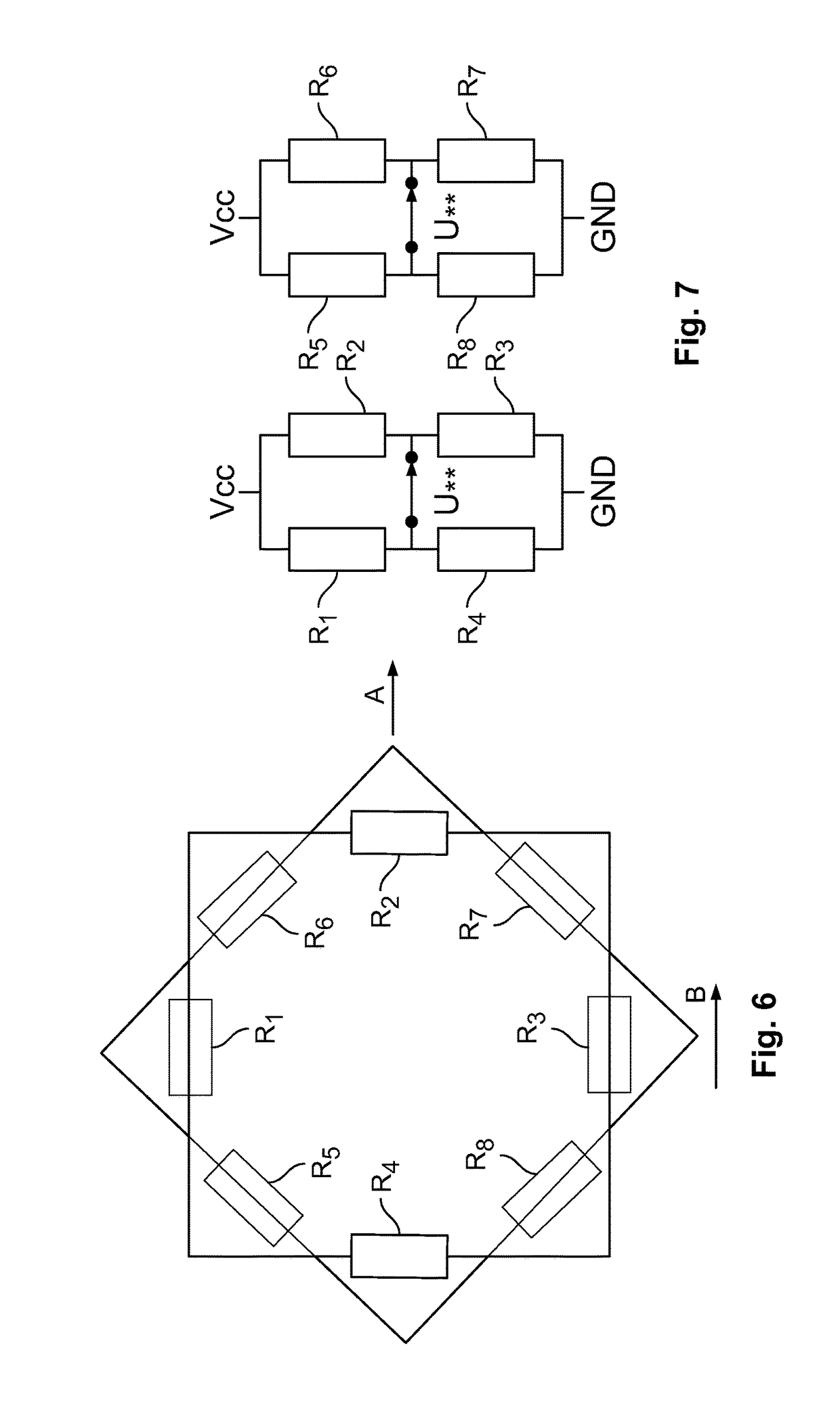Method for Determining the Position of a Magnet Relative to a Row of Sensors
a technology of magnet position and sensor row, applied in the direction of measuring devices, instruments, using electrical means, etc., can solve the problems of calculation effort which has to be employed, and achieve the effects of improving the unique nature of sensor signals, reducing the field strength, and reducing the number of ambiguities
- Summary
- Abstract
- Description
- Claims
- Application Information
AI Technical Summary
Benefits of technology
Problems solved by technology
Method used
Image
Examples
Embodiment Construction
)
[0072]The device shown in FIG. 1 has a row of sensors 1. A first magnetic-field sensor 2, a second magnetic-field sensor 3 and a third magnetic-field sensor 4 are arranged on the row of sensors, spaced apart from one another in row direction A. The embodiment depicted in FIG. 1 is a row of sensors 1 which extends linearly. Additional sensors which are not depicted can follow the third sensor 4 in row direction A.
[0073]The device has a magnet 5. It can be moved relative to the row of sensors in the direction of the double arrow B and thus in a direction parallel to row direction A.
[0074]The magnet generates a magnetic field (not depicted in greater detail), wherein, in the embodiment depicted here, the direction of magnetization of the magnet (the direction pointing from the north pole to the south pole of the magnet) corresponds to the direction of movement B of the magnet 5 and thus runs parallel to the row direction A.
[0075]Five regions are indicated by shading above the row of s...
PUM
 Login to View More
Login to View More Abstract
Description
Claims
Application Information
 Login to View More
Login to View More - R&D
- Intellectual Property
- Life Sciences
- Materials
- Tech Scout
- Unparalleled Data Quality
- Higher Quality Content
- 60% Fewer Hallucinations
Browse by: Latest US Patents, China's latest patents, Technical Efficacy Thesaurus, Application Domain, Technology Topic, Popular Technical Reports.
© 2025 PatSnap. All rights reserved.Legal|Privacy policy|Modern Slavery Act Transparency Statement|Sitemap|About US| Contact US: help@patsnap.com



